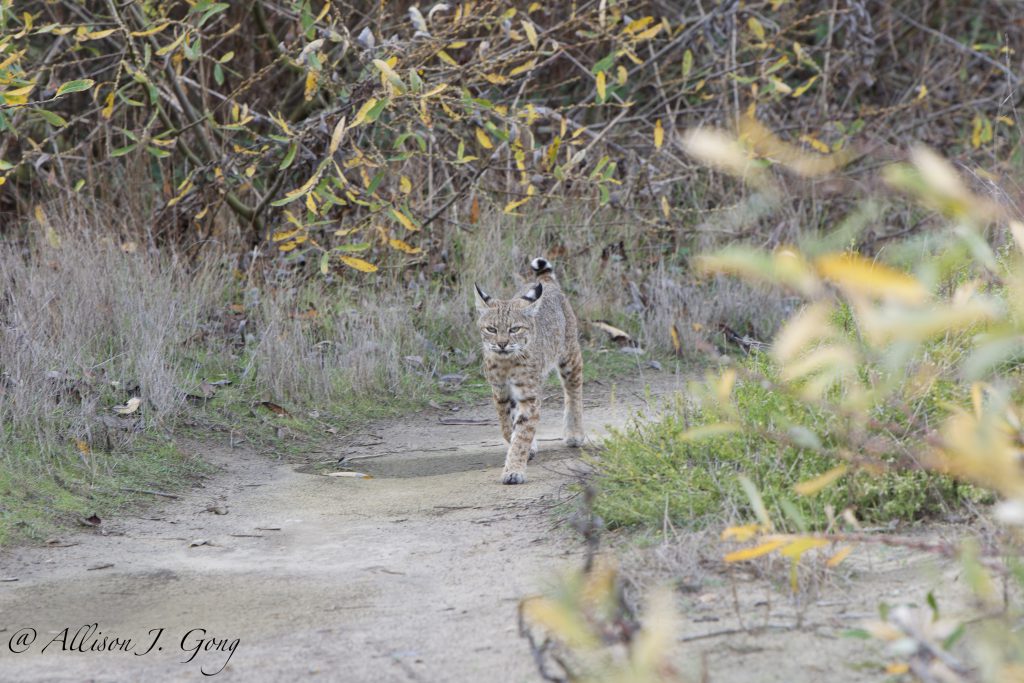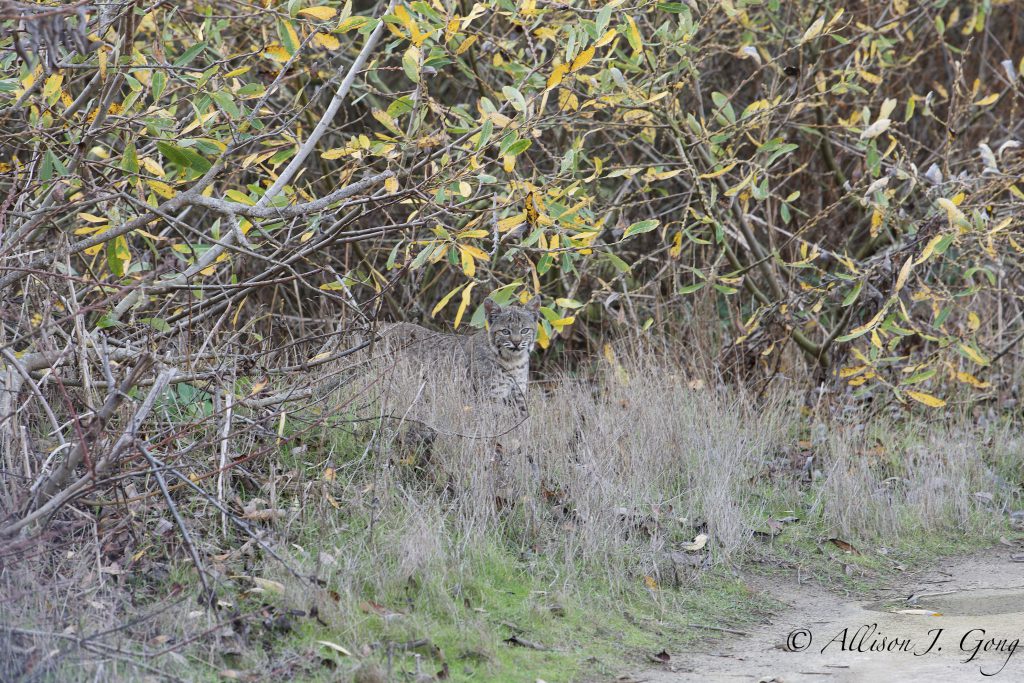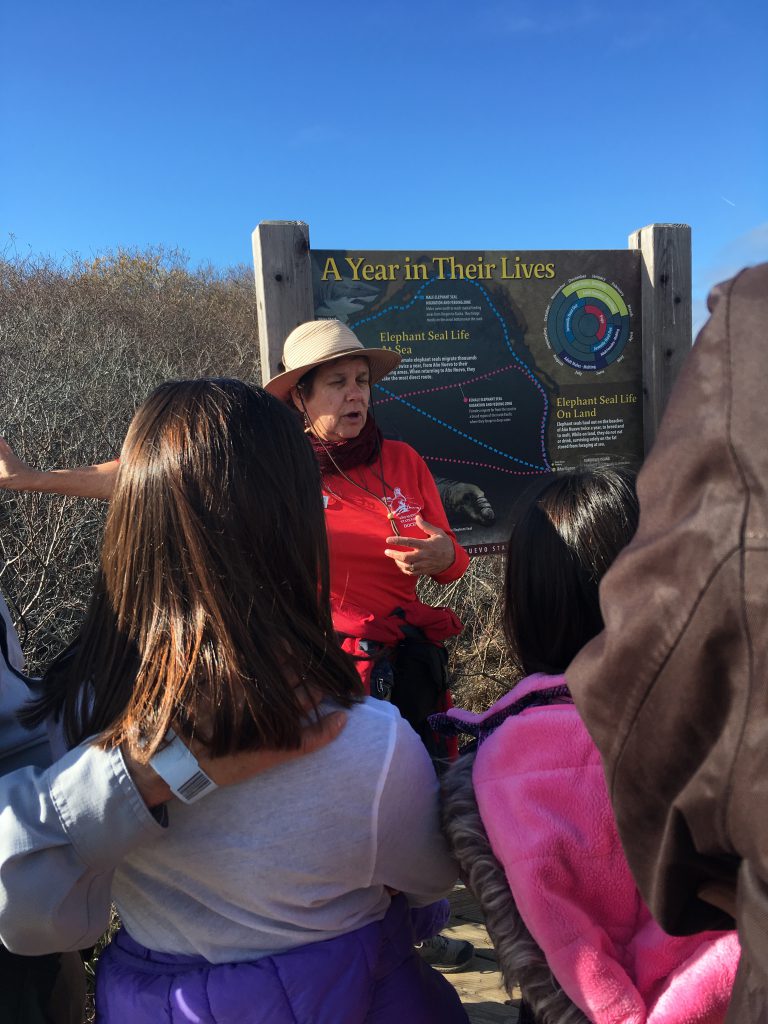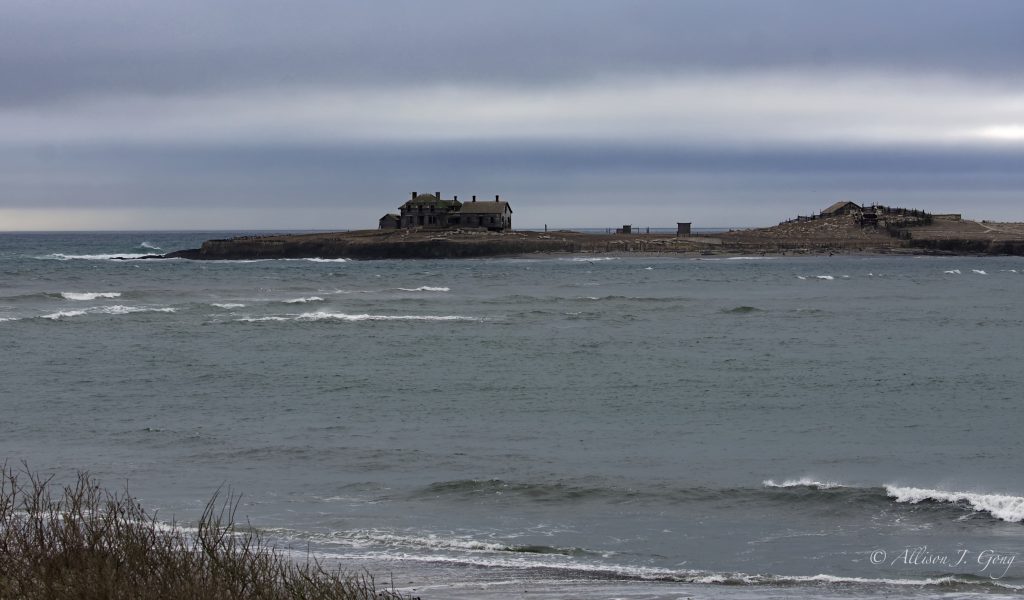I like to venture out of my comfort zone every once in a while, as that’s the only way to keep learning. Even though my particular area of interest is the marine invertebrates, there are a lot of other aspects of marine biology that are almost as interesting. And if I’m going to call myself a naturalist I should extend my knowledge in as many directions as I can, right? Besides, going out and learning new stuff is a lot of fun!
Shortly after the new year I went up to Año Nuevo State Park to see the northern elephant seals (Mirounga angustirostris) at their winter breeding rookery. Of course, I’ve known about the rookery ever since I came to Santa Cruz and have had friends in the Ph.D. program doing their dissertation out there, yet for whatever reason I never managed to get out there during the breeding season. The park is open all year, but while seals are on the beach for breeding the trail out to the rookery is accessible only via docent-led tour. This year I remembered to buy tickets ahead of time, to ensure that we’d be able to see the seals on a day we had time to do so.
The day we went, a Thursday, was threatening to be stormy, so we took our rain jackets just in case. We met up with our docent, a woman named Trevlyn, and hiked out to the beaches. Before we got there, though, we saw a mother bobcat (Lynx rufus) and her two kittens. This particular mom is well known to the folks at the park, who see her frequently. Because of the overcast skies, these normally crepuscular wild cats were active in the middle of the day.
And here is one of her kittens. There were two, but they were much shyer than their mom and hesitated to come out of the bushes.
Both of the kittens looked healthy, alert, and well fed. It looks like the heavy rains of the 2016-2017 season resulted in an abundance of prey–everything from insects to rodents to rabbits to birds–for carnivores, including bobcats. Given the bobcat’s variable and adaptable diet, the future looks bright for these kittens who were lucky enough to be born in a state park. They (and their prey) will not be poisoned by pesticides or herbicides or hunted by humans, although it is likely that mountain lions (Felis concolor) prowl these trails as well.
Before arriving at the rookery we stopped so that Trevlyn could go over some elephant seal biology and give us the rules for visiting the beaches. The rules were: (1) stay behind Trevlyn at all times; and (2) do whatever she says without question. These animals are BIG and can move surprisingly fast over short distances. We were there at the early part of the season and there were only a few hundred animals at the rookery. But later, after all the adult animals have returned to land and the pups are born, it gets very crowded and stinky.
Elephant seal biology
The northern elephant seal is a highly pelagic animal, coming to land for two purposes at different times of the year: to breed in the winter and to molt. While they are hauled out for either purpose they do not feed, and survive on blubber reserves accumulated during the months foraging at sea. The different demographic groups (pups, juveniles, adult females, and adult males) haul out at different times of year.
The breeding season begins in mid-November, with the adult males arriving first. As they are staking out beach territory the females start arriving about three weeks later. They are pregnant and usually give birth a few or several days after their arrival.
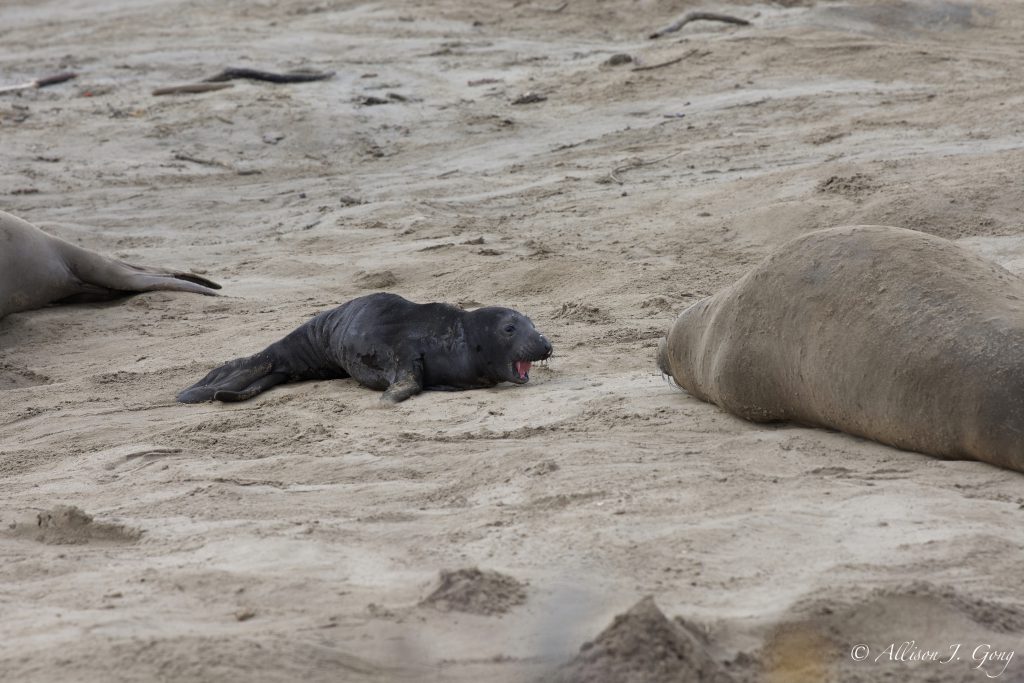
4 January 2018
© Allison J. Gong
A female who has given birth spends all of her time resting and nursing her pup. See how the pup in the photo above is sort of skinny, with wrinkled skin? This tells us that it is only a couple of days old. As it continues to nurse that loose skin gets filled out and the pup gets nice and fat. In the meantime, its mother is fasting while she nurses, and loses a significant portion of her bodyweight.
Sometimes the juvenile males, who have not yet proven their worth against an established bull male, get a little overexcited and try to mate with a female who has just given birth. These females are not receptive because, well, they’ve just given birth and have not yet gone into estrus. Watch this female above rebuff the attention of a juvenile male. Trevlyn told us that females try to rest near the larger bull males, whose presence will keep the juvenile males in line. Oh, and those markings on the young male? Those are made with ordinary hair dye, to identify the animals being studied.
Pups nurse for 28 days, then are abruptly weaned when their mothers mate and return to the sea. At this point the pups are called weaners. Weaners can’t follow their mothers to the sea until they molt their pup fur and learn how to swim. They usually head out around early May, when they become fodder for white sharks lurking just offshore. The sharks ain’t stupid.
The spectacular showdowns between adult male seals fighting for mating rights should be starting up about now.
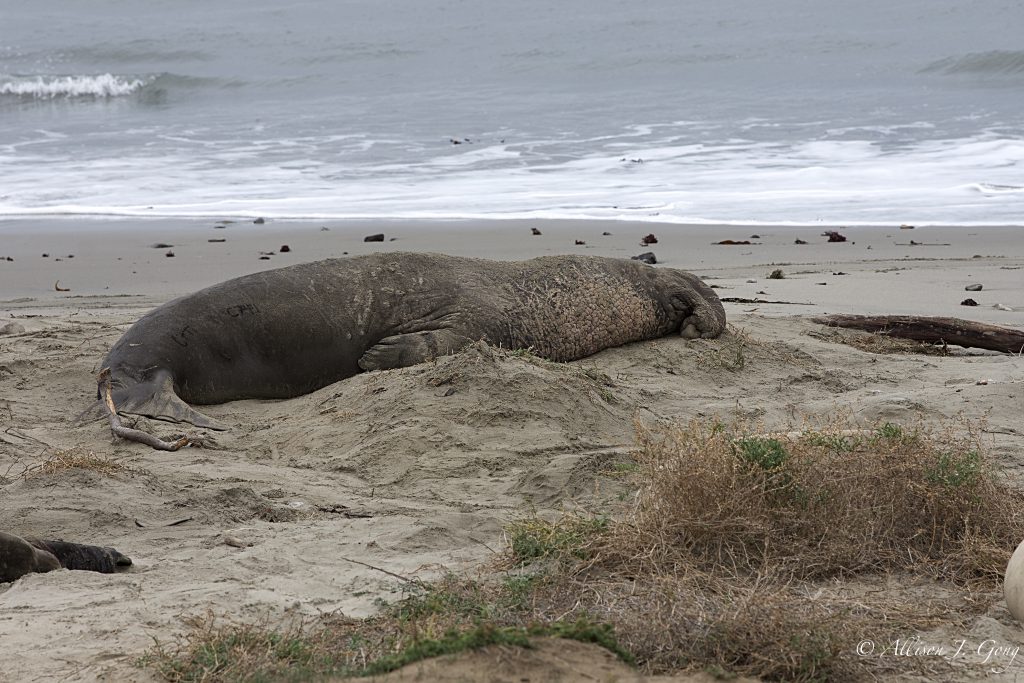
4 January 2018
© Allison J. Gong
Adult males are by far the largest animals on the beach. They also have a much larger proboscis. And see that pinkish stuff on the neck? That is thickened, callused skin that forms when the animals are fighting. As two bull males charge into each other they rear back and then slam forward, trying to gouge each other’s neck with their teeth. The fights are not deadly but can become quite bloody before the loser decides to give in to the dominant male. While they aren’t fighting or mating the males are resting to conserve their energy. This early in the season there is plenty of space on the beach and things are pretty serene, although as animals continue to arrive and pups are born, the fighting and mating will begin in earnest and there will be a lot more activity.
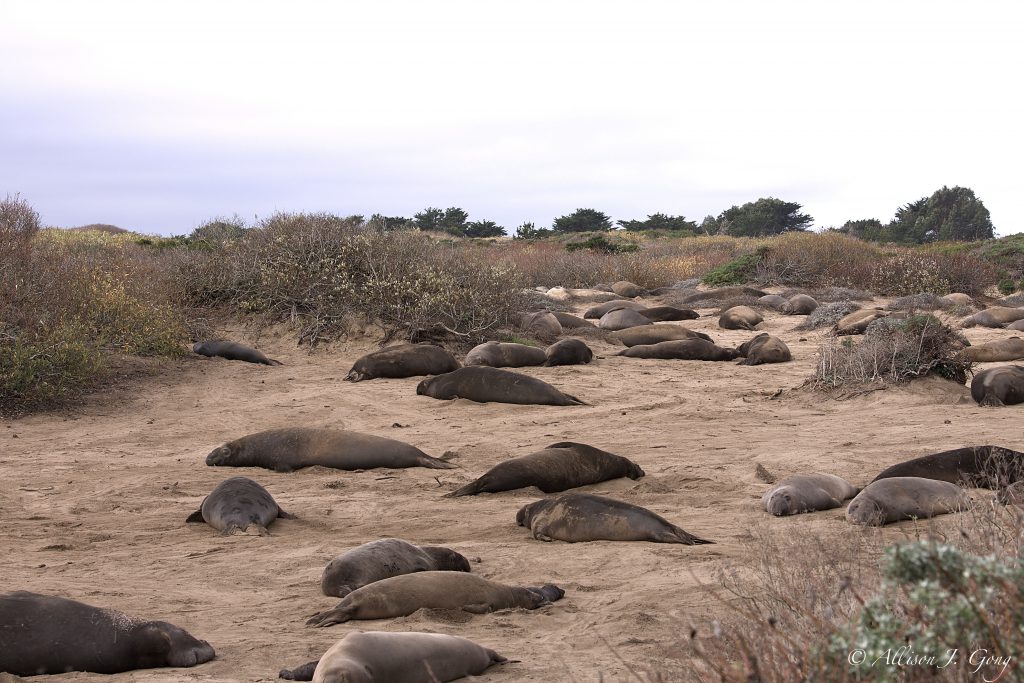
4 January 2018
© Allison J. Gong
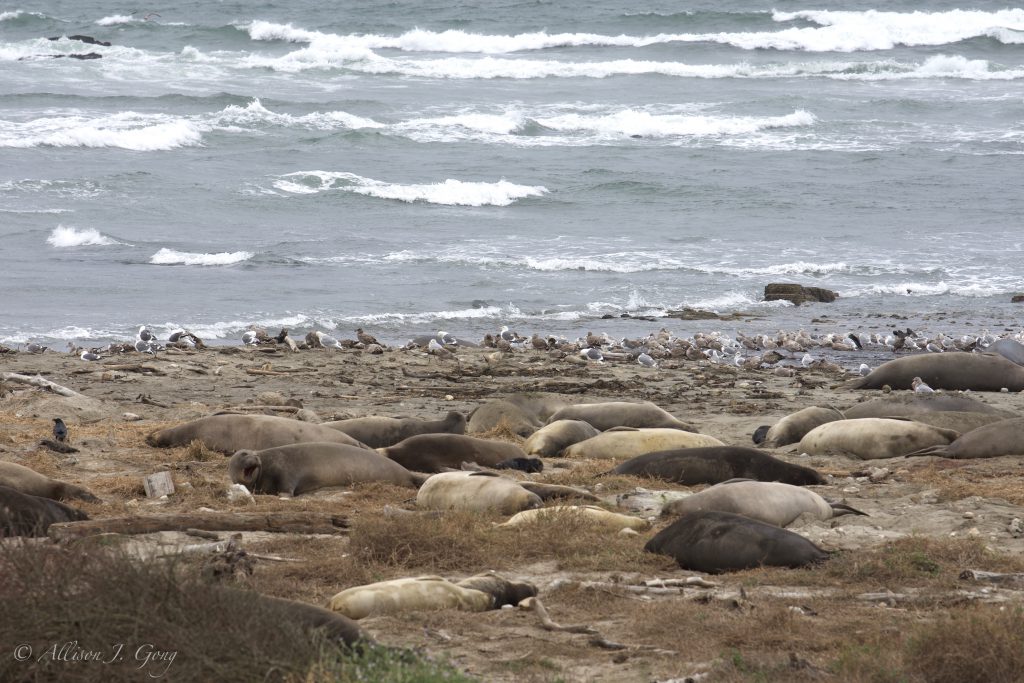
4 January 2018
© Allison J. Gong
But at least as of early January, youngsters like these yearlings can relax on the beach without having to worry about being run over by males weighing up to 2500 kg.

4 January 2018
© Allison J. Gong
Año Nuevo Island lies just offshore. When northern elephant seals began to return to this part of California they established their first breeding colony on the Island. Many pinnipeds, as well as seabirds, breed on islands because they are protected from land predators. In the case of the northern elephant seal, the major land predator was the grizzly bear.
Problem is, Año Nuevo Island has limited beach real estate. Elephant seals can’t climb up even short cliffs, so can come ashore only on sandy beaches. The last wild grizzly bear in California was spotted in 1924, and since then the elephant seals have began taking over the coastal beaches near the island. All told, some couple thousand elephant seals will be on the beach at Año Nuevo this winter. This is a small rookery; the rookery south at Piedras Blancas is much larger. The northern elephant seal population in California seems pretty robust, with the animals having recovered nicely after being hunted to near extinction at the end of the 19th century. In these days when all news about the environment seems to be doom and gloom, it’s nice to hear of a wildlife species doing so well.

